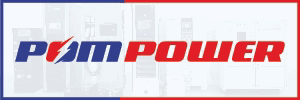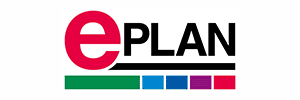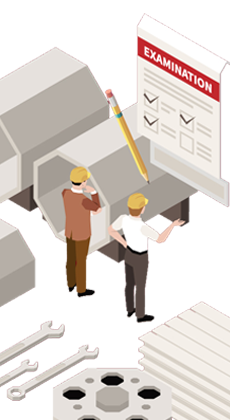Schedule a Call Back
Following Every Movement of the Sun
 Technical Articles
Technical Articles- Oct 05,12
The three major aspects for a nation's healthy energy resource are: Availability, Finance and Applications. Solar energy is widely available, inexhaustible and cost effective energy resource with long term energy security. From Solar modules on satellites to Solar panels on street lights, solar seems to be an omnipresent need for our day-to-day applications. The development of solar technology earns huge demand which will grow year on year and the share of electricity from solar energy is projected to increase about 50% by 2050 and much more ahead. Due to shortage of other primary energies, Solar will become one of the major energy carriers.

Solar rays are being trapped using different types of Solar Cells application-wise such as crystalline photovoltaic cells or concentrated solar cells for the on grid applications and thin film photovoltaic for off grid applications. In Power generation using photovoltaic solar modules, the variable direct current output of the solar panel is converted to an alternating current that can be fed to grid or local off grid applications. However, in the concentrated solar power generation, the absorbed light is converted into heat, which drives a heat engine connected to an electrical power generator.

The course of the sun changes continuously during the day and during the year and is different everywhere in the world. The position of the sun with respect to earth is measured in axial terms. The position of the sun in the vertically upward direction from the observer is measured along the Zenith axis, whereas the position of the sun in the horizontal direction with respect to the observer is measured along the azimuth axis. A solar vector can be specified, whose base point is the installation location of the tracker and which points in the direction of the sun. It is the task of the solar tracker to align itself with this solar vector (Figure 1).
Solar Trackers
Although, conversion of Solar power to electricity is done successfully using such solar trapping techniques, efficient use of this valuable energy can only be done when sunrays are directed towards the panel throughout the day. This can be possible using a solar tracking system for your plant. The tracking solution enables the panels or mirrors to point directly towards the sun's radiation in order to maximize effective use of the sunlight and to ensure exact alignment of the receiver with the sun. Thanks to these movements, the tracker system contributes to an increase in electricity production in solar power projects as compared to the fixed panels.

Tracking can be done in two ways, Active tracking uses solar sensor to track the position of the sun whereas passive solar tracking uses algorithms based on the astronomical data. Usually, Passive trackers are preferred over active trackers to avoid environmental errors of the sensors. The electro-mechanical solar tracker system can be divided into three parts: Solar Panels, Mechanical structure and Automation. Selection of the type of solar panels is highly related to the axes implementation of the Solar panel. Photovoltaic panels have optional single and dual axes whereas the concentrated photovoltaic has a mandatory dual axes implementation. In case of concentrated solar power, single axes are mandatory for parabolic trough and a compulsory dual axes implementation for Central receiver tower and dish-Sterling panels. The mechanical structure for these Solar panels can be Pneumatic or Hydraulic based on the size of the panels.
Automation of Solar Tracking

A PLC controller with a scalable and flexible design to exactly fit the tracking requirements is the heart of the tracking solution. Introducing the different configurations available for solar tracking
The configuration as seen in Figure 2 is characterised by a flexible PV Solar tracker Control with pulse feedback. The axes control is possible for Azimuth only, Zenith only or Azimuth+ Zenith. The mechanical movement is done using an induction motor and the feedback is taken in the form of a single pulse (Figure 2). Referencing can be done during night time. This configuration provides features like error monitoring and Storm monitoring. Different modes of operation possible: Manual mode, teaching mode, Referencing mode and Automatic mode.

The absolute settlement of solar tracker is similar to the relative settlement, with linear actuators and induction motors for the mechanical movement of the panel. Feedback is taken from Analogue rotary sensors for Azimuth/ Diagonal axis and declination sensors for Zenith axis (Figure 3).
In a decentralised PV solar tracker using Modbus, only single axis tracking is possible (Figure 5). The highlight of this Modbus configuration is, 12 diagonal solar trackers can be controlled using a single PLC. Hence, this is a cost-efficient solution for a Solar plant and affects positively in your return of Investment. The mechanical movement is done by Linear actuators with Modbus Interface. Error and Storm monitoring is provided due to which, the panel is moved to stow position during storm.
In case of settling of tracker position using Linear actuators (Figure 5) single PLC can control two horizontal solar trackers. Single pulse feedback is generated by linear actuators. Provides error and storm monitoring and can operate in Manual, Automatic, referencing as well as teaching modes. In this configuration, communication network with a head PLC is possible.

A high precision CPV solar tracking can be implemented using this configuration (Figure 6). Both the Azimuth and Zenith axis are controlled using Induction motor, Induction motor+ frequency inverter or DC motor. A double pulse feedback is taken in this case. Error monitoring, Storm monitoring and referencing during night time is. High precision solar tracking can be performed in Manual mode, Automatic mode, Teaching mode as well as Referencing mode. Along with these configurations the solar trackers help in efficient solar power consumption with a few value added functions like Backtracking, energy management, storm handling, etc. Tracking solutions can also be adapted to solar park concepts. The combination of multiple clusters of PLCs form entire solar park whereas in parks with larger area a combination of multiple SUB and HEAD PLC control the tracking.
The two major concerns for the solar plants are
- Efficiency
- Payback time of the investment.

Solar tracking control features the best solution to these concerns. The efficiency shows impressive growth throughout the day as in the graph below. Fixed panels help to consume solar power, productively for about 8-10 hours per day, whereas with a tracking panel higher output is achieved for additional hours (Figure 7).
With a good tracker, solar panel will personify a Sunflower to follow every movement of the sun. Going with the developing technology, with a solar panel on the roof, a boiler in the cellar, mobile phone in your hand and Solar tracker in your Solar Farm, optimum use of solar energy seems very easy saving a significant amount of cash for you.
Related Products

Heat Exchanger Scale Removal Compound -hesr-300


Universal Tapping Machine -model Tr-10/15
Tapping
Machine Tools offers universal tapping machine -model TR-10/15.
Hi There!
Now get regular updates from IPF Magazine on WhatsApp!
Click on link below, message us with a simple hi, and SAVE our number
You will have subscribed to our Industrial News on Whatsapp! Enjoy














